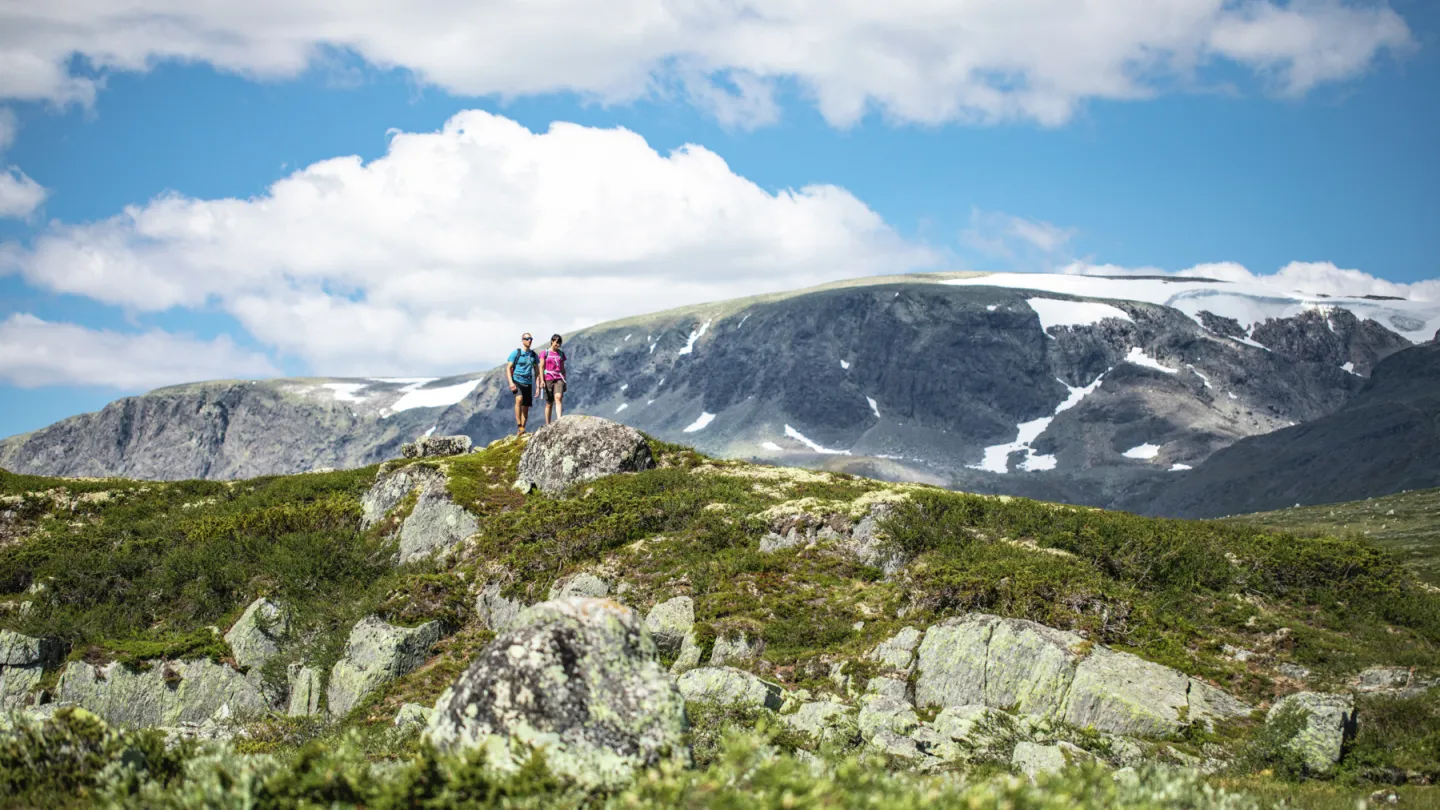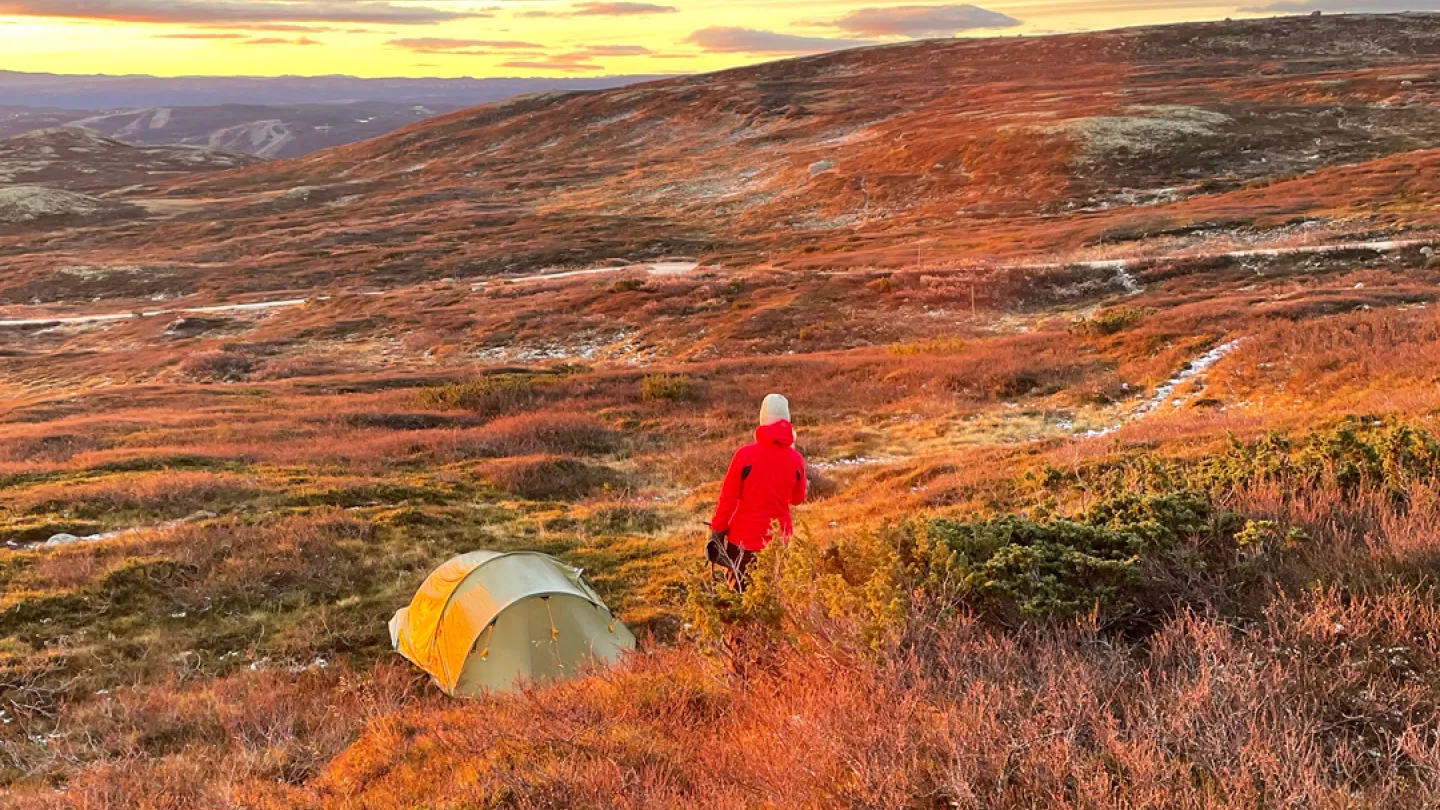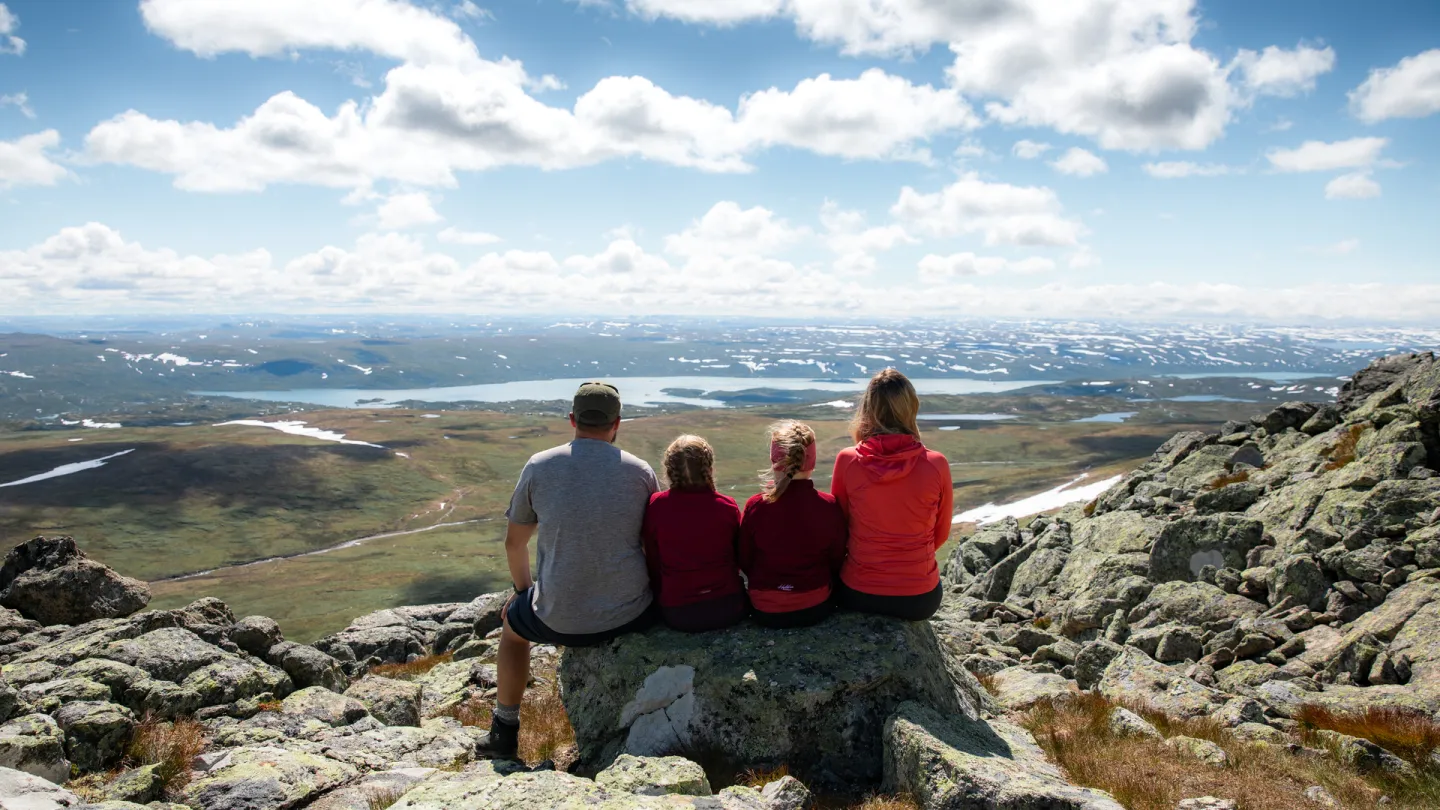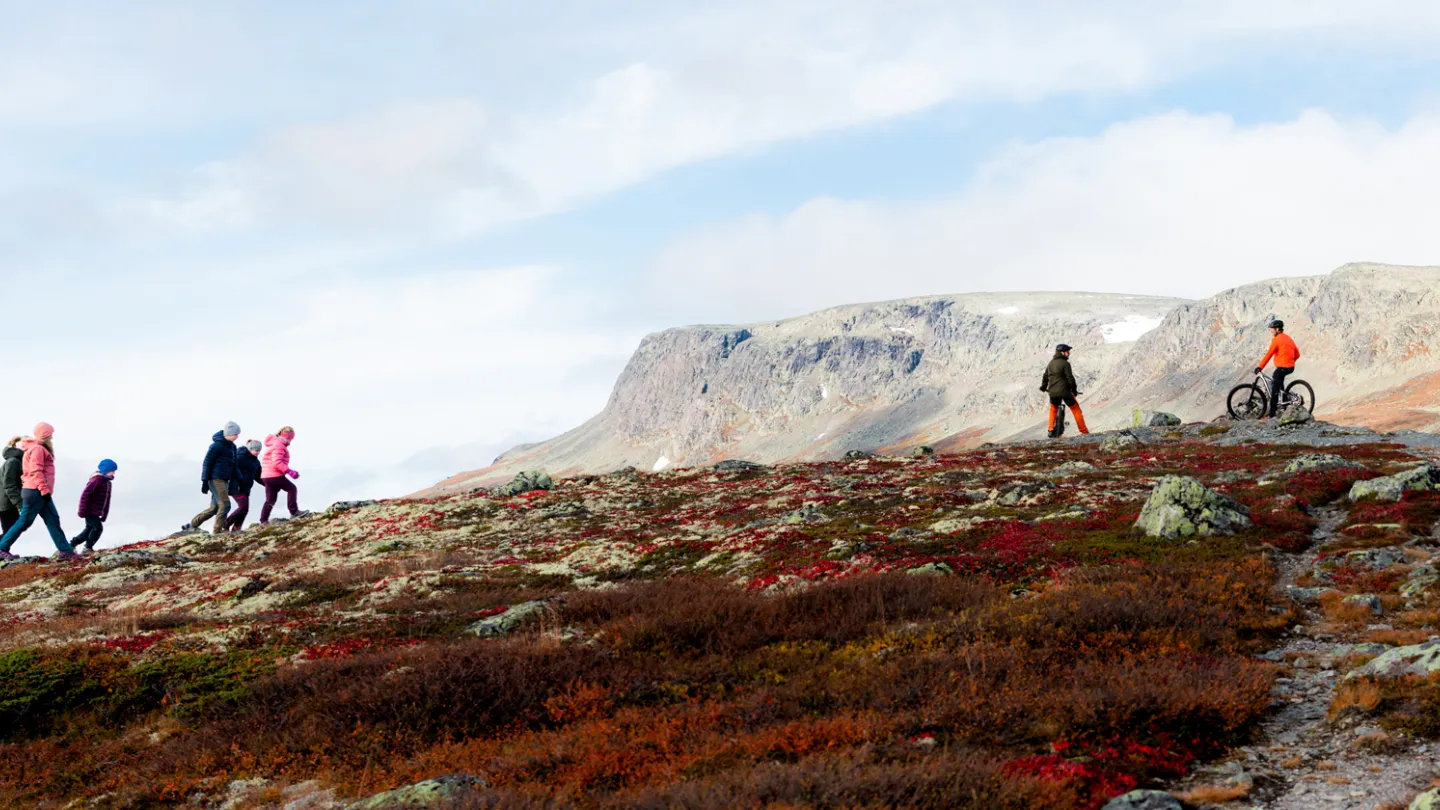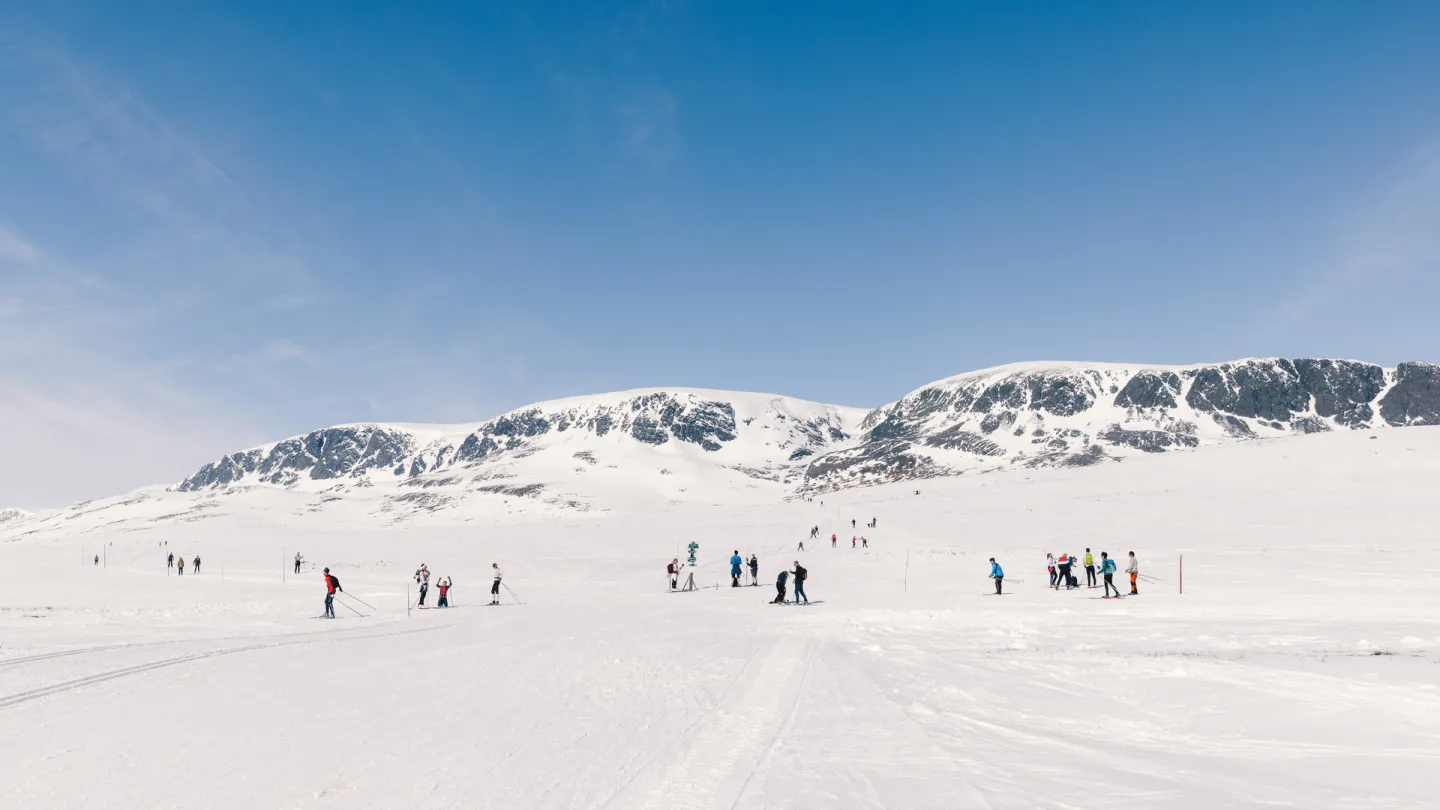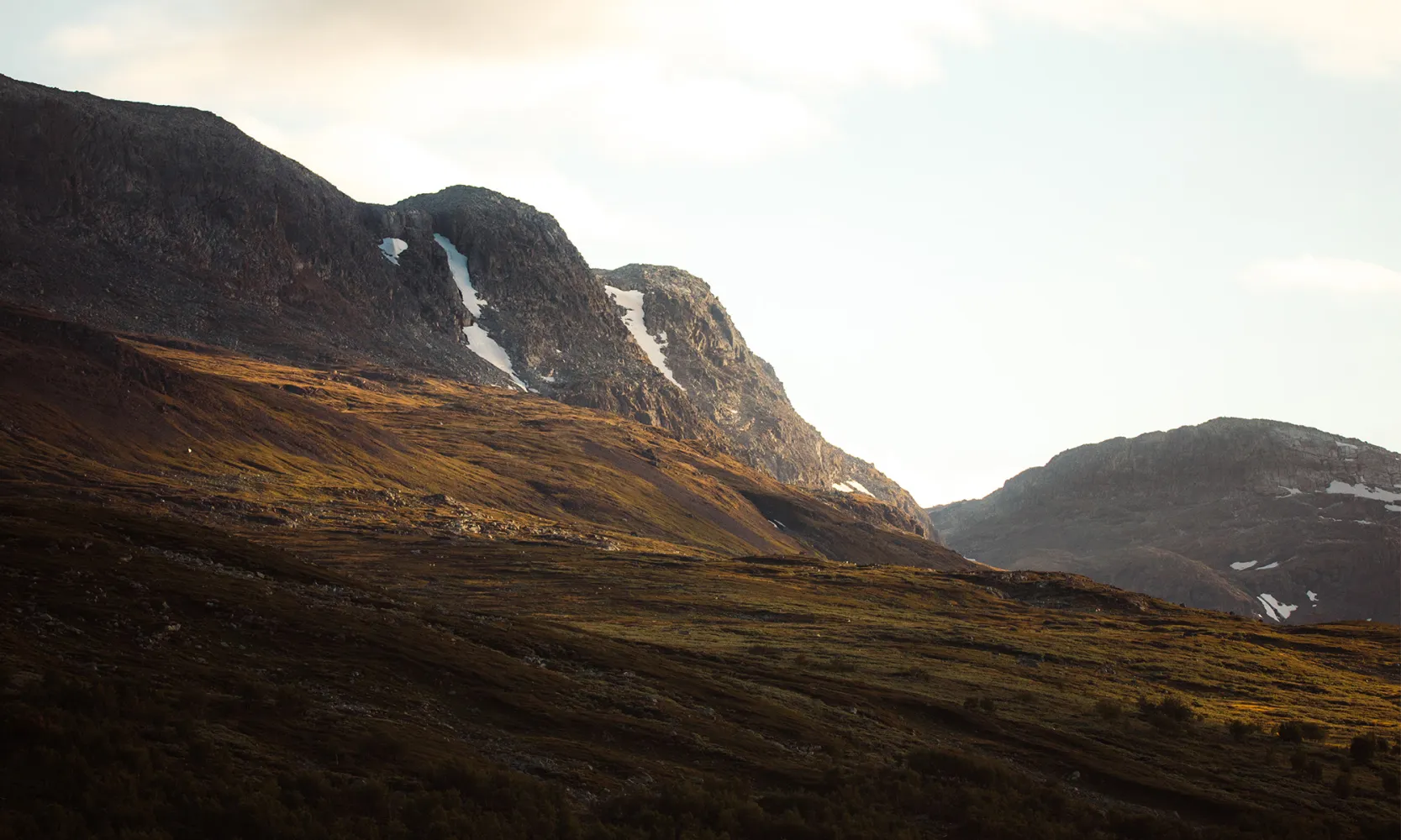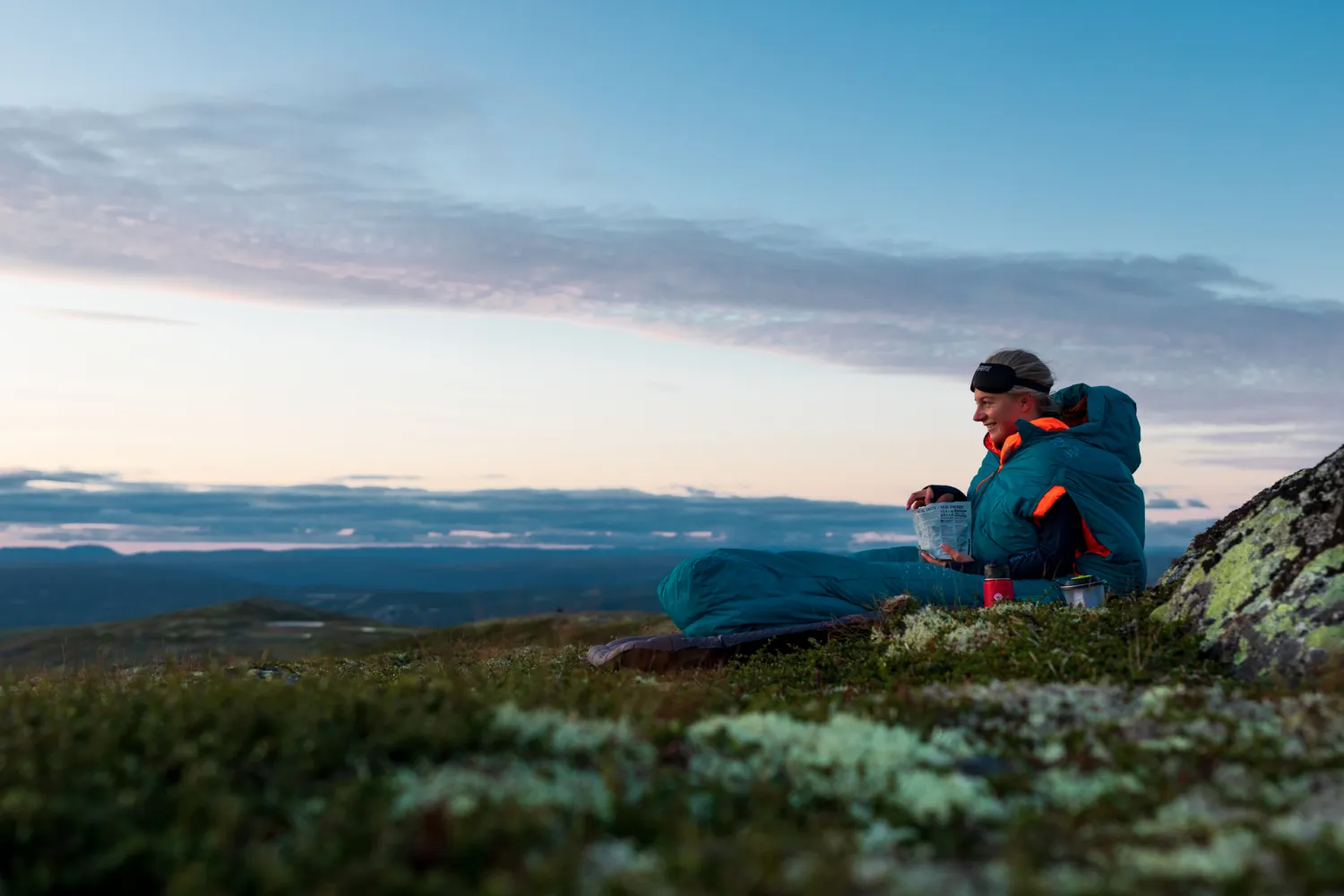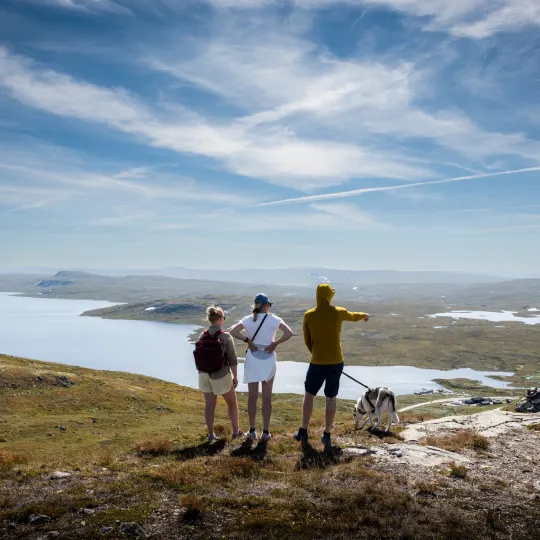Experiences in Hallingskarvet National Park
Hallingskarvet has been a site of human exploration for nearly 8,000 years, with numerous cultural relics from ancient hunting and trapping, as well as traces of prehistoric and medieval use. Today, the park offers a wealth of exciting experiences.
Skarverennet is the third-largest cross-country skiing event in the world, first held in 1974. The 37 km course runs from Finse, across the high plateau, to Ustaoset. Each year, more than 12,000 enthusiastic skiers participate in late April, earning it the slogan "Spring's Most Beautiful Adventure!" The unique views, fascinating landscape, and vibrant atmosphere make this event truly special.
Lordemarsjen is a scenic hike through majestic terrain, taking you from Raggsteindalen over Folarskaret to Haugastøl Turistsenter. Organized annually in early August, this 21 km hike can also be done independently. The highest point is Lordehytta at 1,620 meters above sea level, reached after about 9 km. The entire trail is well-marked and follows a pleasant path.
Sherpatrapper at Prestholtseter leads you up to Prestholskaret. Built by sherpas in 2013, the staircase consists of 2,000 steps and makes the climb to the top more accessible.
Tvergastein and Skarvereiret were constructed by the renowned philosopher Arne Næss. Tvergastein, built in 1937 at the base of the steep cliffs, served as his retreat, while Skarvereiret, built on the summit of Hallingskarvet, was designed as a climbing hut.
Winter at Hallingskarvet is a breathtaking sight on clear days, with a snow-covered landscape stretching as far as the eye can see, dominated by the imposing mountain. There are groomed ski tracks on both sides of the mountain, and it's possible to ski, snowshoe, or break your own trail on mountain skis. Prestholtseter, located right at the base of the mountain, offers dining and accommodation year-round.
Fishing in Hallingskarvet
Some of the lakes on the southern side of Hallingskarvet are managed by the Geilo Hunter and Fishermen's Association (GJFF), while most of the lakes on the northern side fall under the Østre Hol Hunter and Fishermen's Association. You can purchase fishing permits for Geilo JFF at the Tourist Information Office and sports shops in Geilo town center, as well as at most tourist cabins. There are also private lakes where permits are often available at the nearest tourist cabin or on inatur.no. Permits for Østre Hol JFF can be bought at Kiwi in Hagafoss and Coop in Hovet. More about fishing in Geilo
